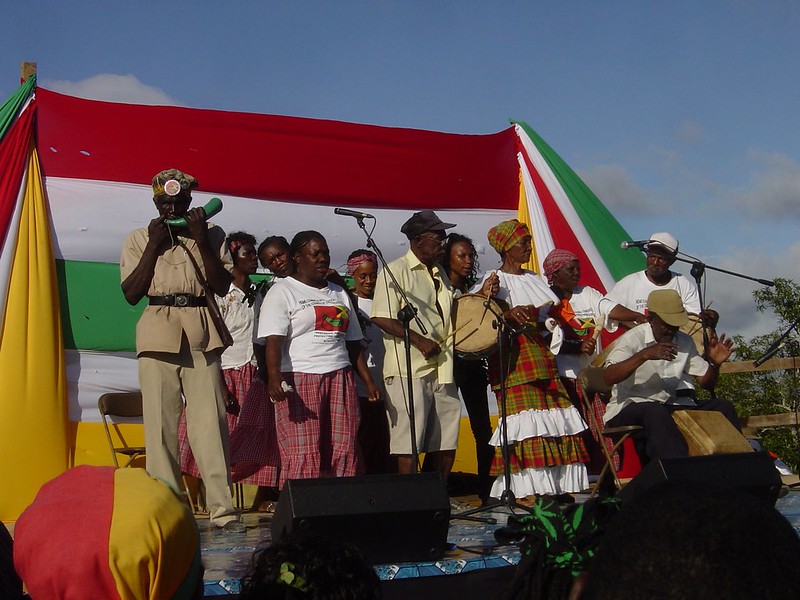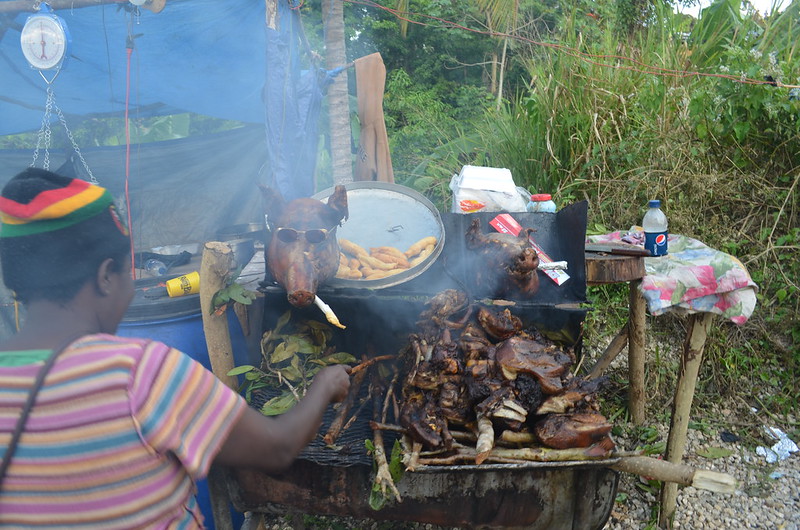Accompong Maroon Festival
A Day When the Pulse of Freedom Echoes Through Jamaica’s Hills
2026/01/05
Every January 6th, the mountain village of Accompong in Jamaica’s Cockpit Country overflows with the energy of the Accompong Maroon Festival. The aroma of roasted yams and jerk pork mingles in the air, the sounds of abeng horns and drums resound, and descendants of the Maroons dressed in traditional attire fill the streets—inviting visitors into a world of living history. Through music, dance, and communal feasts around large bonfires, the spirit of freedom, pride, and reverence for ancestors can be felt in every moment of this special celebration.
The festival is held each year in Accompong Village (St. Elizabeth Parish), welcoming not only Maroon descendants but also travelers from across Jamaica and around the world. For history lovers, music enthusiasts, and those seeking cultural experiences, it’s a rare chance to feel the roots of Jamaica and the ongoing struggle for freedom up close.
Main Attractions
Traditional Ceremonies and Maroon Drumming
The heart of the festival is the sacred ceremony under the Kindah Tree. Maroon leaders offer prayers and libations to their ancestors, and the sound of the abeng (a traditional horn made from cattle horn) signals the start of the festival. Drums and singing echo through the mountains, uniting participants of all generations and backgrounds in the Maroon spirit.
Key Events
Popular events include a reenactment of the 1739 Peace Treaty signing, storytelling, and guided tours of historic sites like Cudjoe’s grave. Maroon dance, song, and poetry performances, as well as displays of local crafts and herbal medicine, are highlights. The communal meal—sharing traditional dishes cooked over a large bonfire—is an experience unique to this festival.
Costumes and Decorations
Participants gather in attire inspired by Maroon tradition: women in white cotton dresses, headwraps, and sashes; men in shirts, hats, and sashes. The village is decorated with banners, flags, palm leaves, and flowers. The feel of handwoven fabrics, the cool mountain air, and the earth beneath your feet all add to the authenticity of the festival.
Traditional Food & Drink
Traditional dishes such as roasted yam, jerk pork, saltfish, dumplings, and callaloo are served, along with sweet potato pudding and coconut drops for dessert. The scent of wood smoke and spices fills the air, and local drinks like sorrel, ginger beer, and rum punch are enjoyed. Sharing food around the bonfire creates a sense of unity and warmth among all participants.
Cultural and Historical Background
The origins of the Accompong Maroon Festival trace back to early 18th-century Jamaica. During British colonial rule, many Africans were brought to Jamaica and forced to work under harsh conditions on sugar plantations. Some escaped and hid in the rugged Cockpit Country mountains—these freedom-seeking people became known as the Maroons.
The Maroons built independent communities in the mountains and, using guerrilla tactics, fiercely resisted the British for decades. Led by Cudjoe, they outmaneuvered British troops and, in 1739, signed the historic Peace Treaty (Cudjoe’s Treaty) with the British. This treaty officially granted the Maroon villages, including Accompong, autonomy and land ownership—making them the only Black communities in the British colony to maintain their independence.
This treaty was the first legal recognition of freedom and self-governance for formerly enslaved people in the Caribbean, and for the people of Accompong, it is a symbol of their ancestors’ courage and unity. The festival is held every January 6th to commemorate the treaty, passing down Maroon history, pride, and culture to future generations through ceremonies under the Kindah Tree, traditional music, dance, and communal meals.
The festival not only honors a history of resistance and pride but also serves as a living testament to Maroon culture. For modern Jamaican society and the African diaspora worldwide, it is a valuable time to experience the power of freedom, self-determination, and cultural heritage.
Participant Voices
I came from Kingston to learn about Maroon history. On a guided tour, I tasted roasted yam for the first time and danced with elders by the bonfire. Everyone welcomed me warmly, deepening my respect for Jamaica’s roots. I was moved by the openness of the community. A local herbalist explained the meaning of the rituals and the importance of the land, allowing me to truly connect with the spirit of the festival.
Fun Facts
- The abeng horn, a traditional instrument used for communication in Maroon society, remains central to the festival today.
- The Kindah Tree, the main venue for ceremonies, is considered a sacred symbol of Maroon unity.
Festival Dates
The Accompong Maroon Festival is held every January 6th in Accompong Village, St. Elizabeth Parish, Jamaica. For the latest information, check with the Accompong Maroon Council or local tourism offices.
The event schedule is subject to change. Please check the official website for the most up-to-date information.
Information
| Name | Accompong Maroon Festival |
| Country | Jamaica |
| Area | St. Elizabeth, Accompong Town |
| Date | 2026/01/05 |
| Link |
Upcoming Festivals
Dia de la Virgen de Guadalupe Mexico
A Festival Weaving Faith, Fervor, and Mexican Identity
2025/12/11L'Escalade Switzerland
Geneva’s Grand Winter Festival of Courage, Chocolate, and Community
2025/12/12Umkhosi Wokweshwama South Africa
The Zulu First Fruits Festival—A Sacred Celebration of Land, Ancestors, and Renewal
2025/12/12Lucia Festival (St. Lucia's Day) Sweden
A Festival of Light Illuminating the Nordic Darkness
2025/12/15Las Posadas Mexico
The Luminous Quest for Sacred Shelter
2025/12/22Noche de Rabanos (Night of the Radishes) Mexico
A celebration blending art, farming heritage, and cultural traditions
2025/12/23Chant of the Sybil on Majorca Spain
A Medieval Prophecy Echoes Through Majorcan Christmas
2025/12/23‘Hatajo de Negritos’ and the ‘Hatajo de Pallitas’ Peru
A Christmas Festival of Rhythm, Faith, and Afro-Andean Heritage in Peru’s Ica Region
2025/12/24Harbin International Ice and Snow Sculpture Festival China
A Frozen Wonderland Where Art and Adventure Merge
2025/12/24Takanakuy Peru
The Andean Festival of Reconciliation by Fist—How Confrontation Creates Year-End Peace and Bonds


